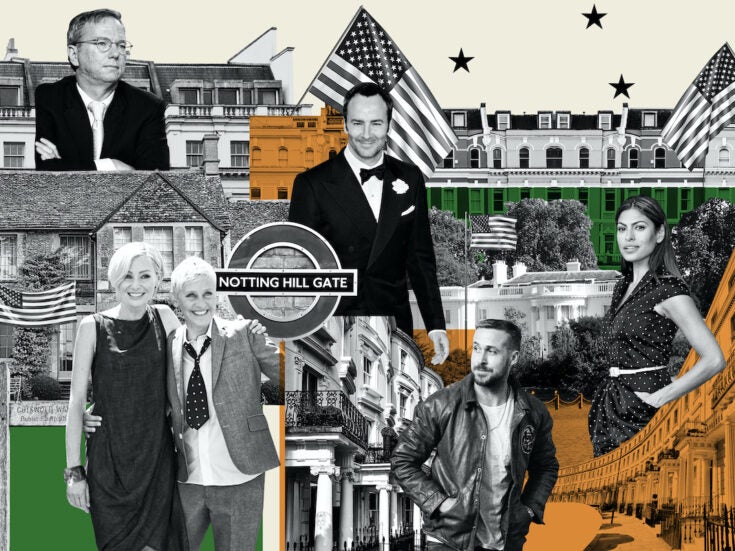Rehab is the new black. Why exactly did we all get hooked on addiction? asks Helen Kirwan-Taylor
Rehab is the new black. Why exactly did we all get hooked on addiction? asks Helen Kirwan-Taylor
Fifteen years ago, to have an addiction was to be classified as ‘insane’. Clinics were for the hopeless and disinherited (everyone else just carried on with their addiction and then died), and employment was out of the question, as was marriage and any chance of belonging to society.
Now you just have to clock up the names – Kate Moss, Naomi Campbell, Robbie Williams, Sophie Anderton, the list goes on – and another picture emerges. Addiction is not only the complaint of choice among the rich and famous, and certainly the most fashionable angst to suffer from, but it is an industry with no shortage of experts, clinics, drugs, books, and therapists offering their services.
The reason for this, as current thinking goes, is that addiction is a disease that you cannot do anything about yourself. That you got into the mess all by yourself – using large doses of opiates, narcotics and alcohol – is neither here nor there. The cure is to have someone else fix you.
Addictions are ‘in vogue’: they are part of a creative personality and come part and parcel with being invited to the right parties during Fashion Week and on Oscar night. ‘Drugs and addictive behaviour tap into our desire for newness and vitality,’ says Nora Volkow, director of the National Institute on Drug Abuse in Maryland.
‘It’s a romantic notion,’ concurs Frederick Toates, professor of biological psychology at the Open University. ‘There is a correlation between addiction and creativity.’ That Kate Moss keeps taking back her constantly relapsing boyfriend begs the question: what does an addict have that the rest of us don’t?
The difference between depression and addiction is that the latter can almost come with a certain smugness. Trinny Woodall, for example, shares her ‘recovery story’ at dinner in much the same way that some of us discuss the triumph of birth.
Addiction is as much a rich man’s game as it is a pauper’s fate. Look among the very rich – the Agnellis, the royals, and certain celebrity circles – and you will find more La Bettule, Cottonwood and Priory graduates than you will find admitted Prozac users.
Every week a new addiction enters the lexicon: gaming is the latest after BlackBerry and computer addiction, while JP Morgan has found that diamond addiction is on the rise. ‘We don’t know why, but we are seeing a rise in addiction,’ says Karen Croft, on behalf of the Priory Clinic in Roehampton, attributing much of the current interest in addiction to the media.
The definition of addiction is in itself a loose term. Where does a habit end and an addiction begin? ‘We have a very clear DSM criteria with or without a physiological dependence,’ says Dr Theodore Soutsos, consultant psychiatrist with the Priory Hospital. ‘Addiction is a habit, which may have started out as a way of relieving stress or giving an illusion of control, but which ends up controlling you.
‘There are clinically recognised diagnostic criteria such as: first, a tolerance of the substance, so that you need more to feel the effects; second, withdrawal when the substance is taken away, so that you have to take more of it to avoid withdrawal; third, you take more than you ever intended to; fourth, you try unsuccessfully to cut down even when there is evidence that it is affecting your basic daily functioning and ruining your health.’
By and large, the industry says that by the time the addict shows up at a detox clinic, he’s pretty much out of control of his habit, but this claim, too, is under increasing scrutiny.
No one can check into the Priory of their own accord – anyone seeking help needs a full assessment by a consultant psychiatrist – but surf the internet or check on to treatment-center.net, and there are as many rehab centres offering their services as there are spas and luxury hotels. In fact, is rehab not just another place to send wayward teenagers and spouses – the current cool answer to fat farms?
A century ago, mental hospitals were the homes of the dispossessed and the hard to handle: now it’s treatment centres. ‘You can summarise a lot of our behaviour, if not all of it, as avoidance and reduction of anxiety, and the habits we develop, because of it, within the structure and rules we live within,’ says Dr Soutzos.
‘People feel more dissociated from traditional support networks, such as family and society, culture and religion, which causes an increasing sense of loss of control, and this is when people turn to habits that develop into addictions.’
‘It is well recognised that addictions can be co-morbid, bringing with them large amounts of depression and anxiety, but there are also people who use addiction as an excuse to avoid any responsibility. These units can become a place to park delinquent personalities who use it as another badge to qualify themselves, thereby avoiding reality.
‘Of course, private treatment of any kind is there to make a profit. Indeed, units are rarely actually set up and run by doctors and the irony is that capitalism attempts to cure the very people it makes ill.’ The Priory is a case in point: it belongs to ABN Amro, which is rivalled only by other giants HCA and Cygnet. All are money-making enterprises, with bottom-line issues.
That addiction is a serious condition, no one would dispute. More worrying is the fact that the success rate of treating this particular illness rates are among the lowest of any ongoing psychological treatment, even though billions are spent trying. A staggering 80 per cent of addicts relapse, and yet the treatment costs can be in excess of $10,000 per week in some top US clinics.
There is a lot of profit is to be had, because, according to the National Institute of Alcohol Abuse and Alcoholism, currently 14 million adults (or one in every 13) abuses alcohol in the United States. The Substance Abuse and Mental Health Services Administration estimates that a combined $276 billion was spent or lost in 2005 on health care, lost productivity, premature death, auto accidents and crime – relating to drug and alcohol abuse.
And, according to Forbes magazine, approximately 75 per cent of that money came from public sources: about $18 billion of the tab went for treatment, even though fewer than 15 per cent of the estimated 22 million Americans who engage in substance abuse actually seek it, and those who seek it keep coming back.
Dr James Braly, of the Virginia-based Minding the Gaps, one of the new holistically-focused rehab clinics in the US that is using intravenous nutrition to treat addiction with great success, says: ‘It’s the medical profession that is resistant to change, not the actual addicts.’ But is this simply because nutrition or self-help tapes do not require a £500-a-night hospital room?
It seems almost plausible that, by ensuring people repeatedly return to rehab, it is a plot to keep the venture capitalists in business. After all, even the so-called celebrity therapists, such as Beechy Colclough, whose clients include Sir Elton John, aren’t beyond seducing the very clients they claim to save. And Cottonwood cures the addicts, until they return six months later. It’s a confusing state of affairs.
As no one can quite figure out whether an addiction is a case of faulty d2 receptors, environment, lack of self-control or just evolutionary leftover anxiety, the costs of treating it will only get higher and higher, and, soon, every neighborhood will have its own detox centre, just as it has its own spa.
Currently, the treatment involves abstinence and the heavily religious AA line of thought and/or a controversial drug treatment using Antabuse or Naltrexone. Anti-depressants are often handed out, which, many addiction experts claim, only shifts dependence from one substance to another.
This creates a situation that later leads to chronic self-medication and more relapses because, says Soutzos, ‘The underlying condition is not treated.’ Residential treatment centres stop the problem, but fewer offer the skills necessary to continue in the outside world.
Other programmes, such as aversion therapy, the Rational Recovery Programme, Cognitive Behavioural Therapy (CBT), Warm Turkey (tapering down stages), and Frames (all about positive feedback) have found some success, but no one is listening.






